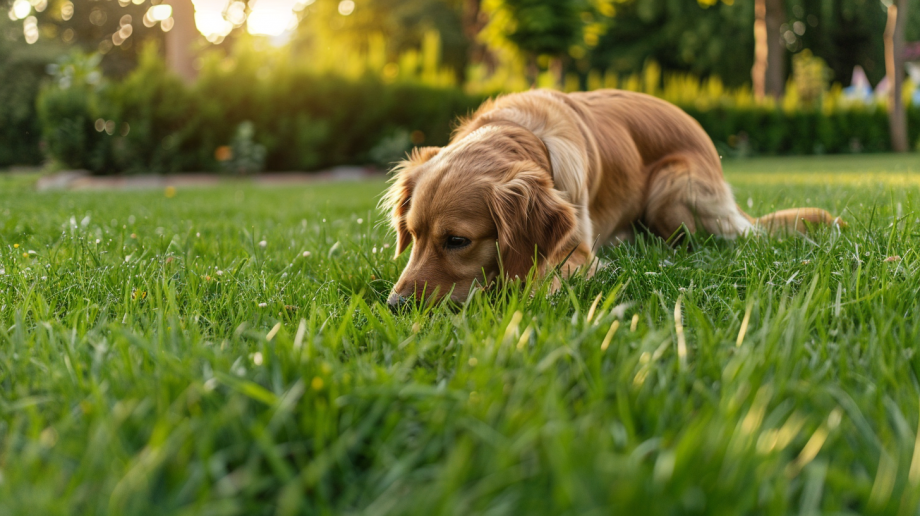
Pet Friendly Ground Coverings for Your Yard
Choosing pet-friendly ground coverings for your yard is simpler than you might think. Not only can aesthetic options like pebbles, mulch, or artificial turf add visual appeal, they’re often safer bets for your furry pals. Ponder clover for a beautiful, green carpet that’s easy to maintain and acts as a natural pest control. Artificial grass, while initially more expensive, is cost-effective in the long run. If seeking durable options, try creeping thyme or pet-friendly types of mulch and stones. Whichever you opt for, it’s crucial to take your pet’s behavior into account as well. Interested in more detailed insight? Let’s delve deeper.
Key Takeaways
- Clover is a pet-safe, easy-to-maintain, and drought-resistant ground covering.
- Artificial grass is a durable and eco-friendly option that saves time and money in the long run.
- Creeping Thyme is a hardy plant that adds color and tolerates heavy foot and paw traffic.
- Pet-friendly mulch options like cedar or pine and carefully selected stones can be used safely.
- Consider the comfort, safety, and behavioral habits of your pets when choosing ground coverings.
Understanding Pet-Friendly Ground Coverings
Before you can choose the right ground covering for your yard, it’s essential to understand what makes a ground covering pet-friendly. You need to take into account factors such as grass alternatives, non-toxic plants, potty training, easy maintenance, and safe play areas when making your decision.
Grass alternatives like pebbles, mulch, or artificial turf aren’t only pet-friendly, but they also create a unique, aesthetic appeal to your yard. Non-toxic plants are important because, as you know, pets can often be tempted to nibble or play around plants. You want to make sure that all plants in your yard are safe for your furry friends.
When it comes to potty training, some ground coverings can make this task easier. For instance, certain types of mulch can discourage pets from using the area as a bathroom, thereby making maintenance easier.
Speaking of maintenance, easy-to-clean ground coverings are a plus. You want to spend more time enjoying your yard with your pet, not cleaning it.
Lastly, creating safe play areas is necessary. Ground coverings should be comfortable for your pet to run and play on. Comfortable, safe, and easy-to-maintain ground coverings help create a yard where you and your pet feel a sense of belonging.
Benefits of Clover for Pet Owners
Now, let’s consider clover, a ground covering that checks many of the boxes for pet-friendly yards. Clover benefits are numerous, providing a lush, green carpet that’s not just pleasing to the eye, but also easy on your pet’s paws. It’s safe for pets, even if they have a habit of nibbling on your lawn.
One of the key Clover benefits is its easy maintenance. Unlike traditional grass, clover doesn’t require frequent mowing or fertilizing, leaving you more time to play fetch with Fido. It’s also drought resistant, thriving in hot summers when other plants might wither, ensuring your pet always has a soft space to roam.
Furthermore, clover serves as a natural pest control. It discourages harmful bugs, including ticks and fleas, which can pose serious health risks to your pets. This means less reliance on chemical pesticides, creating a healthier environment for your furry friends.
In short, clover is a ground cover that not only creates a beautiful, green yard, but also makes it a safer, more enjoyable place for your pets. It’s a win-win situation for you and your four-legged family members.
Exploring Artificial Grass Options
Switching to synthetic grass might seem like a drastic move, but it’s a pet-friendly option that offers a host of benefits for your yard. You’ll be part of a community that values both practicality and aesthetics, without compromising the well-being of your beloved pets.
In terms of maintenance, synthetic grass demands fewer resources. There’s no need for watering, mowing, or fertilizing. It stays beautifully green all year long, saving you both time and money on upkeep.
When looking at cost comparison, the initial investment in synthetic grass is higher than natural grass. But, over time, you’ll recoup this through lower maintenance costs. Plus, its longevity makes it a cost-effective choice in the long run.
The installation process of synthetic grass is straightforward. A team of professionals will ensure it’s installed correctly for best function and appearance. Durability testing has shown that high-quality synthetic grass can withstand heavy foot and paw traffic, ensuring it lasts for years.
Lastly, if you’re conscious about the environment, there are eco-friendly options available. Many brands use recycled materials to make their synthetic grass, contributing to a greener and more sustainable world. This makes it not just a pet-friendly, but also an earth-friendly choice.
Creeping Thyme: A Hardy Alternative
Another pet-friendly ground cover you might consider is creeping thyme, a hardy plant that not only adds a splash of color to your yard but also withstands heavy foot and paw traffic. This low-lying perennial, with its tiny aromatic leaves and purple flowers, adds significant aesthetic appeal to any garden.
When planting creeping thyme, consider these tips:
- Choose a sunny spot with well-drained soil.
- Space young plants 8-12 inches apart to allow for growth.
- Water regularly until established, then only during prolonged dry periods.
- To encourage dense growth, lightly trim after flowering.
Maintenance requirements are minimal. Creeping thyme is drought-resistant, needing water only during severe dry spells.
Climate-wise, it thrives in USDA zones 4-9. If you’re in a colder region, consider planting in a raised bed or container, which can be moved indoors in harsh winters.
Creeping thyme is generally free from common garden pests and diseases. However, watch for root rot in overly wet conditions.
Using Mulch and Stone Safely
For pet owners looking for non-plant options for ground coverage, mulch and stone can be safe and visually appealing alternatives when used correctly. Mulch safety involves selecting pet-friendly options, like cedar or pine, that discourage pests and improve soil health. Avoid cocoa mulch, as it can be harmful to dogs.
You should also consider your pet’s behaviors. Do they dig or chew? If so, large, rough-edged stones may not be the optimal choice. Smooth pebbles or river rocks can offer a secure, cozy surface for play and rest.
Stone precautions include staying away from sharp or jagged choices that could harm your pet’s paws. Also, keep in mind that dark-colored stones can become quite warm under the sun and may be unpleasant for your pet.
Lastly, think about yard maintenance. Mulch will need to be replaced periodically to guarantee it remains effective and safe. Stones, on the other hand, require less frequent attention but should still be inspected for sharp edges and debris.
Conclusion
As a pet owner, you’ve got a host of pet-friendly ground cover options to choose from. Whether you opt for the natural charm of clover, the durability of artificial grass, or the hardiness of creeping thyme, each offers unique benefits.
And don’t forget about mulch and stone, which can also be used safely.
So, go ahead, revamp your yard with these pet-friendly materials, and create a haven that your furry friends will love to explore.








